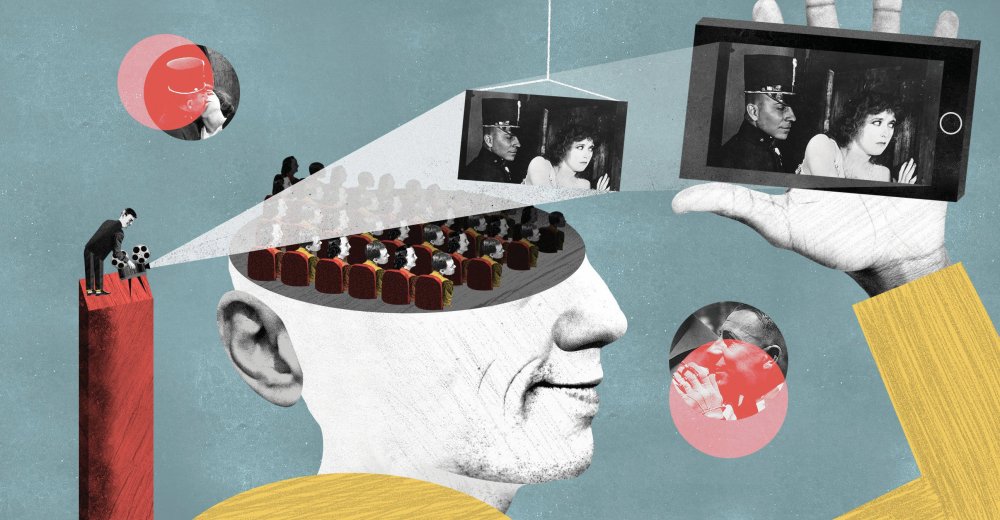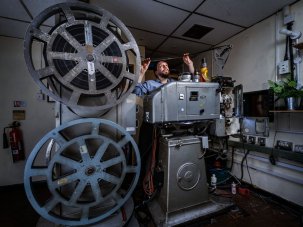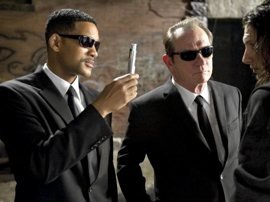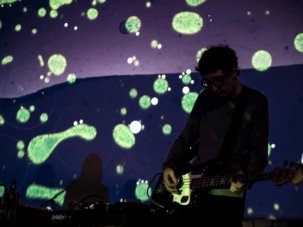If you go to a movie in the United States at a theatre belonging to the Cinemark chain, you will witness a pre-show etiquette lesson meant to dissuade patrons from fidgeting with their smartphones during the feature presentation. The spot, which is just awkward and awful enough to be worth quoting, encourages viewers to say, “No way, pocket screen” to their phones, and instead to open themselves up to enthralment by a “movie that’s about to start on this movie-sized screen that was made for movies”.
Other exhibitors have instead decided to roll (over) with the times – this spring, the AMC chain announced that it was considering designating specific auditoriums “texting friendly” (the consideration lasted just two days). Whether pro- or anti-pocket screen, the message sent by these developments is the same: the mighty has fallen, and the cinema screen has lost its place of pride atop the hierarchy of screens.
Movies seem at one and the same time more ubiquitous and less commanding than ever. On a recent train commute I sat next to some guy watching a download of the recent Tina Fey comedy Whiskey Tango Foxtrot on a five-inch phone, his enjoyment seemingly not diminished by the added duty of dashing off a text message every few seconds in a pop-up window that appeared right on screen.
And who am I to judge? I still remember one night in 2011 when, eating dinner at a restaurant alone in a strange city, I watched a chunk of Erich von Stroheim’s 1919 film Blind Husbands on my fancy new phone, and had the shivery sense of stepping over a precipice into a new world whence I could never return. I may even have had a vision of the much-circulated video of David Lynch castigating iPhone ‘moviegoing’ from a few years back: “It’s such a sadness that you think you’ve seen a film on your fucking telephone…”
We all basically know what we’re referring to when we talk about a movie – in the commercial context, it’s something about an hour or longer that you can maybe see in a room with a bunch of other people or, more likely today, watch on television, laptop, pay cable, home video, iPhone, etc. But what makes a movie a movie? Is the definitive version what’s experienced on Cinemark’s “movie-sized screen”, a screen untainted by the touch of lower orders of art and entertainment (such as serial cable drama, cut scenes, .gifs and internet pornography)?
Even in the case of the ideal and idealised theatrical presentation, it’s hard to say that a vast, unbreachable gulf still exists between the multiplex and the ‘home theatre’ experience. The presence of analogue film in the projection booth, the one technical characteristic that continued to set the cinematic pilgrimage apart after the appearance of TV and home video, has all but disappeared in the wake of 2009’s Avatar, with which James Cameron saved the Na’vi and condemned first-run 35mm to the dustbin of history. The projectors were practically dismantled overnight, and even the celluloid-partisan repertory houses, the last hold-outs of original format projection, are now at the mercy of archives and distributors who won’t lend out their vast print holdings or allow the option of 35mm when they can foist off one of their ‘stunning’ dead-tech 4K DCP restorations instead. In the US, a country where dedication to freedom of consumer choice is taken to the brink of self-destruction, all this took place behind closed doors, without a quorum or a vote. Given how rarely discussed the qualities of sound and image are in most non-niche writing about movies, the language scarcely existed for a public debate over the possible implications of the changeover, though I suspect that the average consumer has felt it in ways they aren’t wholly able to articulate.
Avatar (2009)
As inducements to theatrical moviegoing, we now have only the purportedly mystical experience of collectively dreaming in the dark with a bunch of dolts who can’t stop futzing with their phones and the draw of opening-day access to new movies. And even the lure of exclusive early access has been gradually chipped away at, with so-called day-and-date releasing – the simultaneous appearance of a movie in theatrical, video-on-demand, and home video formats – increasing in popularity among distributors specialising in independent films, and with the emergence of streaming content providers such as Amazon Studios and Netflix as players on the festival circuit. Now even the big studios seem to be considering the possible advantages of the simultaneous release model: this spring Sean Parker, of Napster and Facebook fame, was pitching distributors on a company called the Screening Room, which proposes to market a piracy-proof set-top box that would allow access to big new releases for $50 a pop. Thus far exhibitors have staunchly resisted the idea, though history has proven it is mighty tough to stuff these sorts of genies back into the bottle once they’re out.
For most people, movies are experienced now as digital files of variable resolution viewed on an assortment of glowing rectangles of descending size, from the movie-sized screen to the living room flatscreen to the tablet to the phone – and on most of these multipurpose devices the ‘movie’ is just one of a bevy of entertainment options. While a revolution in viewing habits has taken place, film cultural discourse has lagged behind, mired in nostalgia for the days before the barriers fell. Among other things, this means that contemporary cinema is retrofitted to be understood according to a familiar narrative of cultural-critical history, so that there is an unbroken continuity between the Cahiers du cinéma moment of the mid-1950s and 2016, and there is always a new crop of geniuses hiding in plain sight, working craftily within the constraints of the Hollywood system, disrespected by the hoity-toity cultural gatekeepers, and Justin Lin is the new Anthony Mann, and it’s eternal summer in Paris as we emerge blinking from the rue d’Ulm Cinémathèque of our minds to relive and relive the Golden Age of Cinephilia.
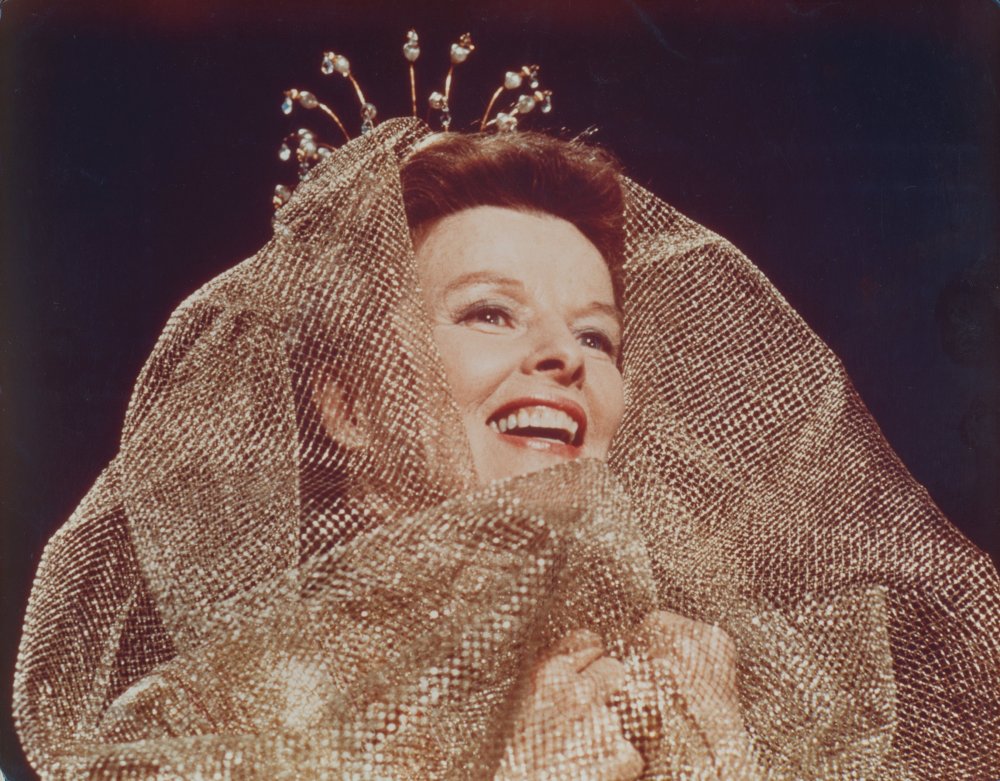
Katharine Hepburn in George Cukor’s 1975 telemovie Love Among the Ruins
A few more observant critics have, one way or another, recognised that such a radical change in the environment in which films are produced and consumed calls for a new vocabulary with which to discuss what the movies are, or are becoming. Kent Jones, in a recent piece for Film Comment, asked readers to question certain reflexes inculcated by auteur theory, which he argues have persisted in discourse well after the conditions that created them have disappeared. “We’ve grown used to equating the excitement of cinema with its impurities, with the model of art secretly made under the cover of crass commercialism, with the critic panning for gold among piles of dross,” Jones writes. But “what we refer to as cinema – for lack of a better description, the nuanced articulation of image and sound – is no longer a great popular art form. The cinema has now diverged from the greater entity of worldwide audiovisual entertainment, where artistry is far more suspect and less welcome than it was in the heyday of Harry Cohn and Louis B. Mayer.”
This is part of an ongoing effort by Jones to push film critical conversation beyond terms arrived at around the middle of the 20th century, even if it involves throwing out the proverbial baby with the bathwater – see his statement, in 2015: “Mise en scène is a beautiful concept, but I think it has outlived its usefulness.” The critic Adrian Martin takes another tack in his 2014 book Mise en Scène and Film Style: From Classical Hollywood to New Media Art, in which he outlines the various historical definitions of mise en scène, then brings the concept to bear on various ‘extra-cinematic’ works: international reality TV, a gallery installation by Chantal Akerman, a set piece from an episode of Breaking Bad (2008-13), Lisa Kudrow’s internet series Web Therapy (2008-15).
When Jones imagines cinema today as “a specialised practice, far more likely to turn up within a museum or on a streaming service” and Martin locates mise en scène in an episode of Ladette to Lady (2005-10), both are recognising the need for a definition of movies that goes beyond the movie-sized screen. What has occurred in recent years, and what these writers are responding to, is a kind of great levelling. Alterations in viewing habits have humbled the movie, which, after decades of enjoying an elevated or exempt status, is now jostling shoulder to shoulder with other audiovisual forms: television, video games, net.art, gallery projections, music videos and so on.
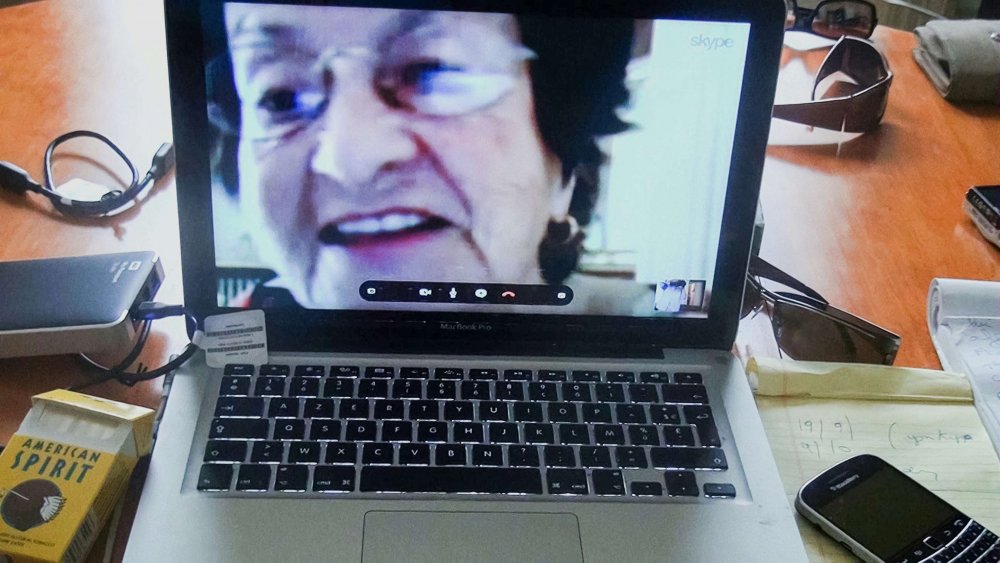
Chantal Akerman’s 2015 No Home Movie
This is the final arrival of a phenomenon that began a long time ago, but never quite reached the critical mass which made it imperative that we talk about it. Most auteurists of baby boomer vintage or younger discovered cinema through old movies on television, and from quite early on there was the troubling hybrid animal that is the TV movie to deal with: taking American examples alone, can we honestly say that Sam Peckinpah’s Noon Wine (1966), Curtis Harrington’s How Awful About Allan (1970) or George Cukor’s Love Among the Ruins (1975) exist on a fundamentally different plane from their ‘proper’ film work?
A few months ago when I was recording a podcast with the critic Amy Taubin, about the best ‘movies’ of the previous year, she lamented the fact that most film publications limit viable entrants to theatrical releases, suggesting that the category ought to be expanded to ‘lens-based’ work. (Specifically, Taubin was miffed about being unable to sing her love of Cinemax’s The Knick [2014-], directed by Steven Soderbergh.) J. Hoberman was ahead of the curve here: in 1986, as staff critic for the Village Voice, he included ‘Game 6, 1986 World Series’ on his year-end top ten list, right between Yamakawa Naoto’s A Girl, She Is 100% and the Oliver Stone twofer of Platoon and Salvador. Among youngsters on social media feeds there has been fuss over the failure by movie-centric social networking site Letterboxd to accommodate discussion of music videos, particularly in light of such high-profile recent releases as Rihanna/Megaforce’s Bitch Better Have My Money and Beyoncé/Dikayl Rimmasch/Jonas Akerlund/Khalik Allah’s Lemonade.
This is in part tied to a motion to expand the conversation about ‘cinema’ beyond the confines of the feature-filmmaking apparatus, access to which is still tied to privilege; and, in the instances cited above, to credit black female auteurs. For my part, I favour anything that helps free the conversation, so-called, from the tyranny of the new release slate, which often boils down to discussion of the relative merits of the Marvel and DC cinematic universes, an endeavour that strikes me as maybe the worst use of an adult’s time and my mind imaginable – well, outside of talking seriously about plot twists in Game of Thrones. The necessity of reconsidering how we think and talk about an expanded cinema has often given way to excesses, to overemphatic ‘So-and-so-is-the-new-movies’ ballyhoo that bears only a coincidental resemblance to criticism. Much touted work belonging to extra-cinematic audiovisual categories seems valuable principally for the service it renders as think-piece fodder, and it’s an awfully curious coincidence that the sudden astronomic spike in must-watch TV happened to overlap almost exactly with the moment of Web 2.0, with its insatiable hunger for constantly refreshing content.
But who can say we aren’t living in interesting times? The idol of cinema has been toppled, and now its fragments are everywhere. And isn’t it terrible? Isn’t it exciting?
-
Sight & Sound: the August 2016 issue
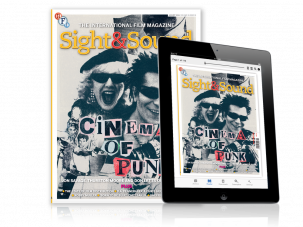
Jon Savage, Thurston Moore and Don Letts on 40 years of punk. Plus the changing shape of cinema distribution, Chevalier, Born to Be Blue, and the S...
-
The Digital Edition and Archive quick link
Log in here to your digital edition and archive subscription, take a look at the packages on offer and buy a subscription.




